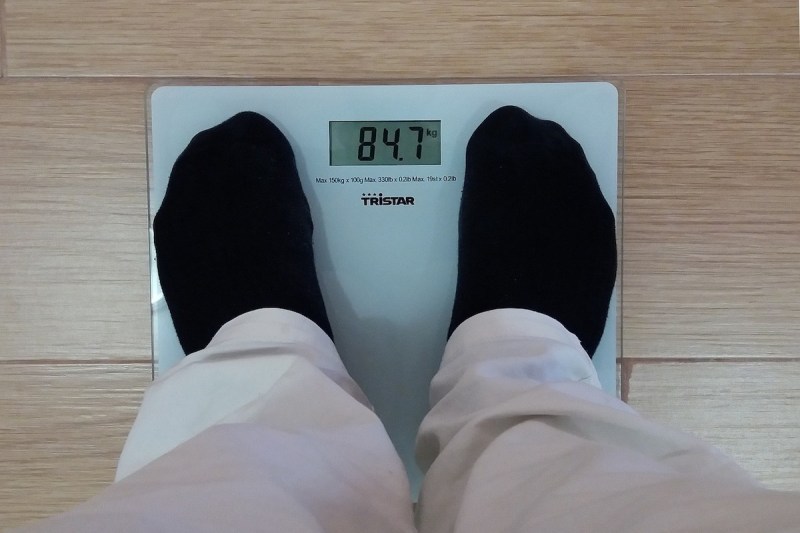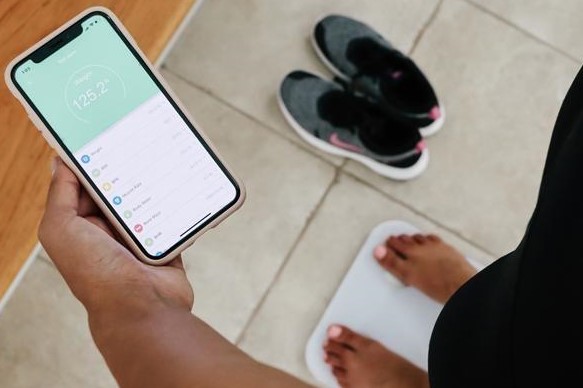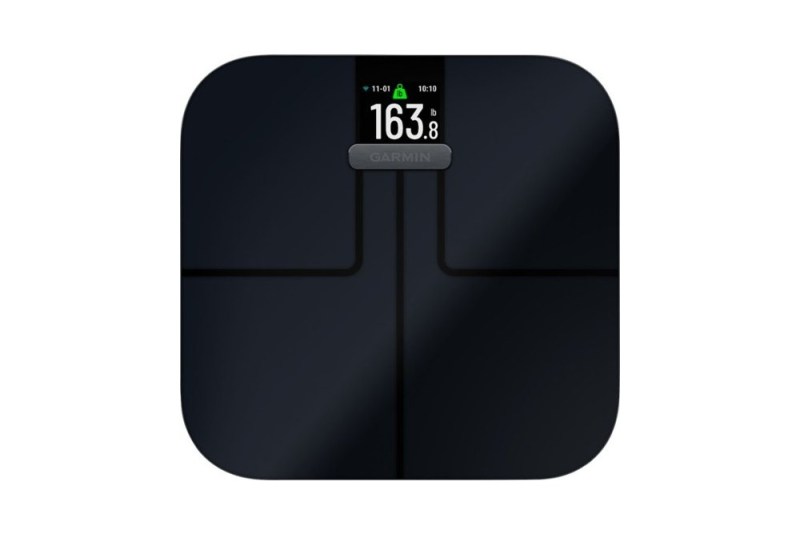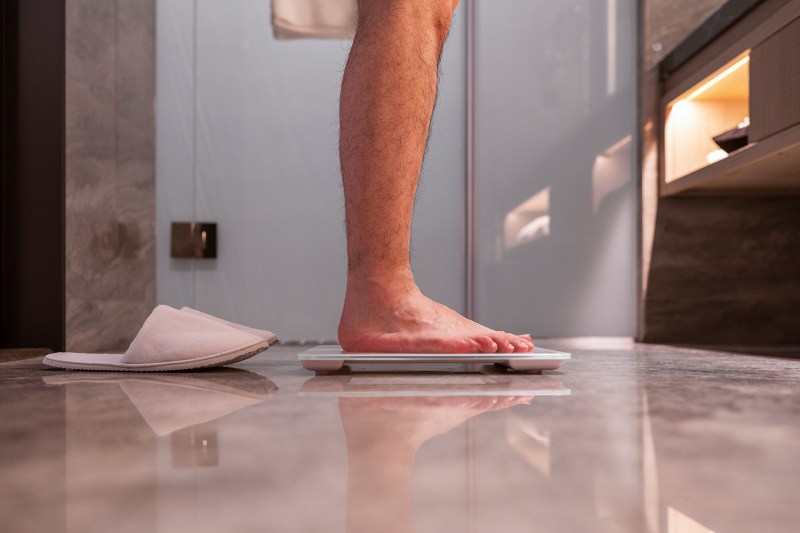
Nearly everyone desires to sit at a healthy weight, but what does that even mean? The reality is that you don’t only need to focus on your actual body weight, as muscle mass and body fat percentage also play an important role in your health. Luckily, a body fat calculator can provide some helpful insight.
Smart scales, or body fat scales, can be a convenient way to get a more comprehensive picture of your health and body composition compared to a standard bathroom scale that only measures weight. But are body fat scales accurate? Can you trust your smart scale? Keep reading to find out.
What is body fat percentage, and why does it matter?
Body fat percentage refers to the relative amount of your body weight that is composed of adipose tissue, or fat. Athletes who have a lot of muscle mass or a lean physique have a low body fat percentage and a higher relative proportion of lean bone mass (muscle, bone, nerves, organs, blood, etc.).
“Most average individuals will have body fat percentages in a healthy range of between 20–30%, meaning of their total weight, 20–30% of that is fat mass,” explains Dr. Dana Ellis Hunnes, PhD, MPH, RD, who is a registered dietitian and the clinical director at UCLA Medical Center. “So a female who weighs 140 pounds will be carrying between 28–42 pounds of fat on [her] body, and a male (whose healthy body fat percent range is around 11–20%) who weighs 180 pounds will be carrying 19–36 pounds of fat.”
Dr. Hunnes says that body fat percentage is a better indication of health and disease risk than BMI, which does not consider your body composition.
How do body fat scales work?
Body fat scales use a method called bioelectrical impedance to measure your body fat percentage. The principle behind this kind of body fat calculator is that electrical current travels differently through body fat and lean tissue because the resistance of these tissues to electrical current is not the same.
When you stand on a body fat scale, the soles of your feet contact electrodes that send a small, harmless electrical current up your legs. The electrical current flows more easily through body tissues that contain more water (blood, muscle, urine) compared to drier tissue (fat and bone).
Based on how quickly the electrical current passes through your body, the body fat scale then can predict the percentage of body fat. These algorithms combine the bioelectric impedance measure with other inputs such as your total body weight, height, sex, age, and potentially even your fitness level, depending on the quality of the body fat scale.
In general, the higher the bioelectrical impedance, or resistance to electrical current, the higher your body fat percentage. Body fat contains less water than muscle tissue, so it takes longer for the current to travel through fat.
Some body fat scales also have a handle with additional metal electrodes that send another electrical current through your upper body. These body fat scales then combine the analyses of the segmented parts of your body to compile a total body fat percentage and then display your BMI on the scale.
How accurate are body fat scales?

Ultimately, a tool is only useful if it’s accurate, so how accurate are body fat scales? Most studies show that smart scales and body fat scales aren’t particularly accurate.
A study that compared the accuracy of body fat percentage measurements on three different body fat scales compared to a DEXA scan (an accurate medical imaging technique to measure body composition) found that the body fat scales were not accurate in assessing body fat. All three body fat scales underestimate fat mass and body fat percentage; these discrepancies were even greater for subjects who were overweight or obese.
Other research suggests that body fat scales can give a fairly good indication of body fat percentage for a population but not necessarily for certain individuals. This is actually similar to the validity of BMI in that it can correctly categorize many people but may not be a good indicator of health for those with a muscular build. The accuracy of body fat scales has been shown to be significantly worse for people who are overweight or obese, routinely underestimating body fat percentage.
There are a variety of factors that can affect the accuracy of the body fat percentage on your smart scale. Body fat scales that only do foot-to-foot analysis without an upper-body component are particularly inaccurate because they miss large segments of your body. Rather than actually sending the electric current up your trunk and arms, the current just travels up one leg and then down the other.
Then, based on the body fat distribution in your lower body, the algorithm is supposed to extrapolate your total body fat percentage by inferring the body composition in your upper body. However, this can be wildly inaccurate for certain people. For example, if you have a “pear-shaped” body, meaning you store a lot of your body fat in your hips and thighs, your body fat percentage will be overestimated because the scale will assume that you are just as “fatty“ in your upper body. On the other hand, if you have slender legs and carry more of your weight in your chest/breasts and abdomen, the body fat scale will underestimate your body fat percentage based on the thinness of your legs.
In general, foot-to-foot body fat scale analysis tends to overestimate body fat percentage in lean individuals and underestimate it in overweight individuals.
Training status may also affect the accuracy of body fat scales, so there isn’t necessarily a consistent trend for how exercise training will alter the accuracy of your smart scale.
Additionally, your hydration status can affect your body fat percentage measurement on the scale. When you drink more water, body fat scales become less accurate, typically reading the increased water as body fat. This is why it’s really important to try to be consistent with your measurement procedure when you use a body fat scale. Try to weigh yourself at the same time every day, and keep your hydration routine and bladder elimination as similar as possible.
Is BMI a good measure of body fat percentage?

Most healthcare professionals say that it’s really a matter of your body fatness — how much adipose (fat) tissue you carry — that is associated with your risk of various lifestyle diseases, not your total body weight. You can be a competitive athlete training upwards of ten or more hours per week in the gym and have a body mass index (BMI) that still classifies your body as “overweight” or “obese” based on your weight-to-height ratio. Yet, you might have extremely low levels of body fat.
Similarly, if you’re trying to lose weight by simultaneously dieting and lifting weights to build lean body mass, your weight on the scale may change very little. However, your body composition may change dramatically. These are just two examples that illustrate the benefits of body fat percentage measurements over basic body weight.
“Body fat percentage is better than BMI, because you can have a bodybuilder who weighs 250 pounds with a BMI of 35 or more but 8% body fat, or you can have a person who weighs 225 pounds with a BMI of 35 but a body fat percent of 40%,” notes Dr. Hunnes. “In most cases, the lower-fat individual will be healthier and at much lower risk for many chronic conditions, such as diabetes, heart disease, stroke, and certain cancers.”
In other words, BMI is unable to distinguish your body composition. Therefore, BMI might be less useful for assessing health risks, especially if you have a muscular build. The best way to get an accurate body fat percentage measurement is to either get a DEXA scan or find a site in your area that offers Bod Pod analysis. However, these can be costly and inaccessible to many people.
At home, you can track your progress in terms of how your body shape and composition are evolving. Take circumference measurements of key sites along your body, such as your waist, hips, thighs, chest, and upper arms. Then pair these measurements with the readouts from your body fat scale. As you build muscle mass and lose body fat, these measurements will decrease.
There are also newer innovations for at-home body composition analysis. One of them is ZOZOFIT, a body measurement system that uses 3D fit technology to help you monitor your body’s transformation over time.
No matter what method you use to keep track of your body fat, try to be as consistent as possible in how you take your measurements, and take every measurement with a grain of salt.




